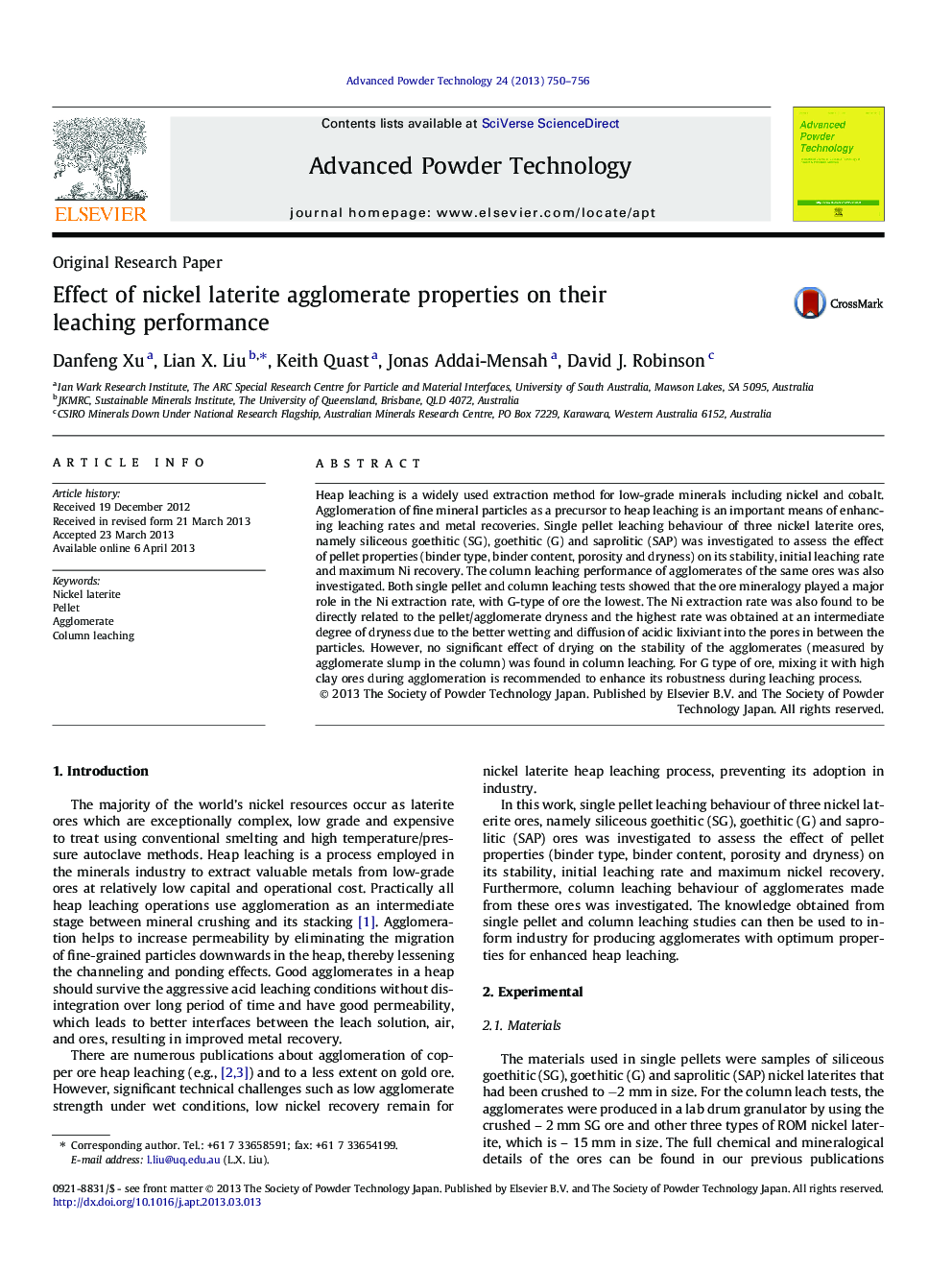| Article ID | Journal | Published Year | Pages | File Type |
|---|---|---|---|---|
| 144328 | Advanced Powder Technology | 2013 | 7 Pages |
•Leaching behaviour of three types of nickel laterite pellet/agglomerates was studied.•Ore mineralogy plays a major part in the Ni recovery with goethitic type of nickel laterite the slowest.•Semi-dried agglomerates have faster Ni extraction rate at the beginning of the leaching tests.•Acid-bound nickel laterite agglomerates leach faster than water bound ones.•The effect of binder content and pre-set porosity has minimal effect on Ni extraction rate.
Heap leaching is a widely used extraction method for low-grade minerals including nickel and cobalt. Agglomeration of fine mineral particles as a precursor to heap leaching is an important means of enhancing leaching rates and metal recoveries. Single pellet leaching behaviour of three nickel laterite ores, namely siliceous goethitic (SG), goethitic (G) and saprolitic (SAP) was investigated to assess the effect of pellet properties (binder type, binder content, porosity and dryness) on its stability, initial leaching rate and maximum Ni recovery. The column leaching performance of agglomerates of the same ores was also investigated. Both single pellet and column leaching tests showed that the ore mineralogy played a major role in the Ni extraction rate, with G-type of ore the lowest. The Ni extraction rate was also found to be directly related to the pellet/agglomerate dryness and the highest rate was obtained at an intermediate degree of dryness due to the better wetting and diffusion of acidic lixiviant into the pores in between the particles. However, no significant effect of drying on the stability of the agglomerates (measured by agglomerate slump in the column) was found in column leaching. For G type of ore, mixing it with high clay ores during agglomeration is recommended to enhance its robustness during leaching process.
Graphical abstractFigure optionsDownload full-size imageDownload as PowerPoint slide
